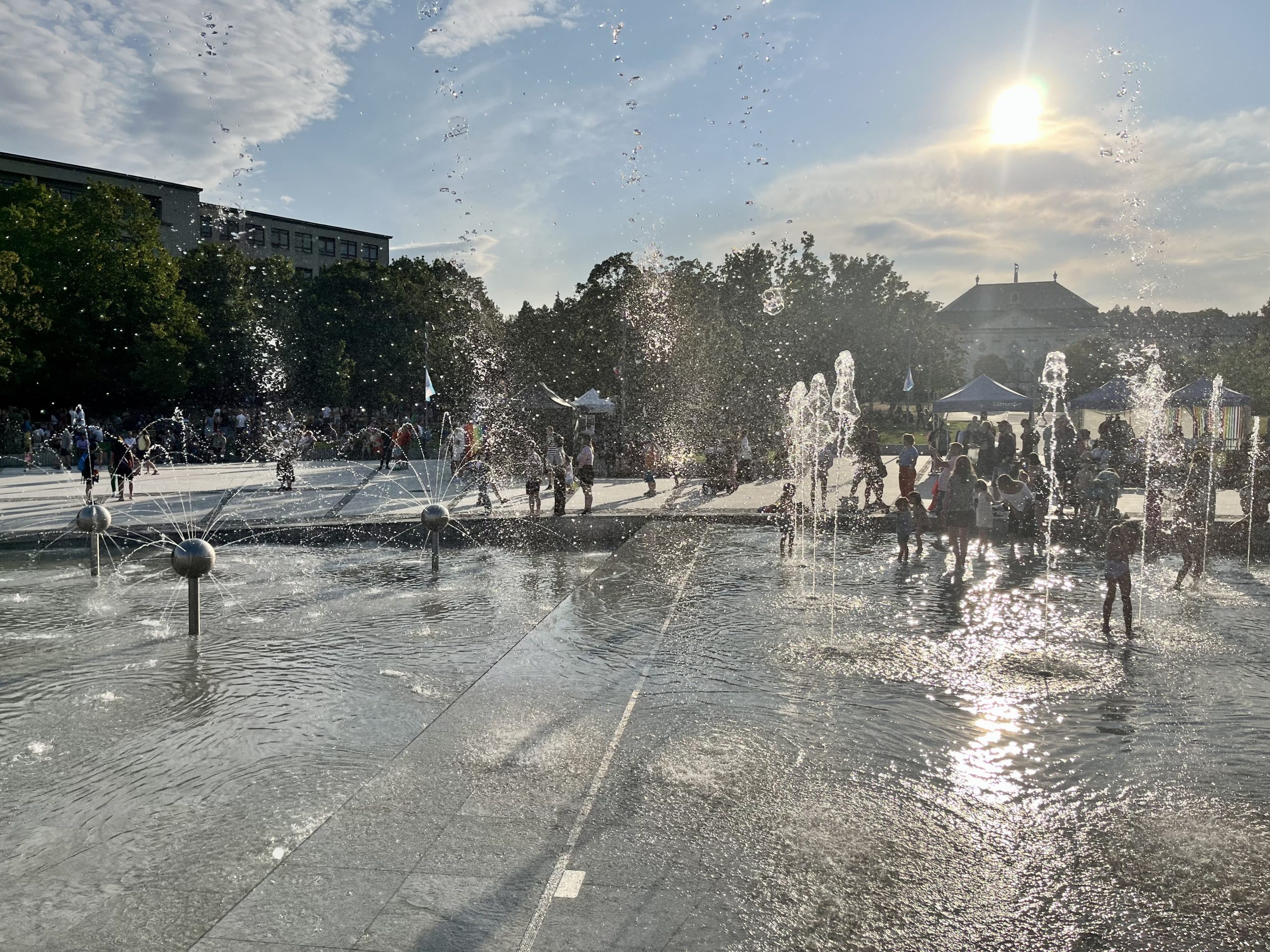Review / NÁMESTIE SLOBODY
I once read somewhere that it doesn't matter how much money you make, you will always find the happiest people at the swimming pool anyway.

Námestie Slobody [Square of Freedom] is the second space in Bratislava in half a year that has emerged from an architectural competition in search of a solution to the question “what to do about it?”. Compared to other procedures, 2021 architects and LABAK did not take the path of denying or erasing the past, but the path of responsible care. They brought refined and minimal interventions in the framework of updating and (re)modernizing the existing spatial form.
For decades, we have dreamed of activating public space marked by dehumanized scale. Monumentalism and its self (re)presentation was a distinct manifestation of late modernism. The narrative that the architecture of late modernism was to blame for the decline of public space took hold so strongly in our environment that it became an ideological tool for the systematic erasure of its material memory. Alongside this, few have considered the real cause of the decline and dehumanisation of public space emerging between 1968 and 1989. Today we know that it was always closer to the absence of care (Istropolis), to programmatic decay (Hotel Kyjev), than to the malignancy of the form of architecture as its immanent, irreparable characteristic.
Today, more than 40 years after the first opening of the fountain and the square, the fountain and the pool itself is becoming a place of friendship, not between nations, but between ordinary people. What the space lacks today is indeed a lángos stand, and this would not be a sign of decline, quite the contrary. If there was ever a time when lángos stalls devalued the public space of our cities, it was precisely because they lacked a swimming pool in the neighbourhood. But the renewal of the square is not yet at an end. The more popular the place becomes, the more it will lack the basic facilities of ordinary services. This was originally provided by the now long-privatised pavilions with a restaurant. Further proof of the wrong approach in the past, when privatisation of municipal property was the silver bullet for all the problems of the state of the public space. The last wish, however, lies in the return of the original furnishings by architect Viktoria Cvengrošová and architect Virgil Droppa. It is a necessary step towards the consistent fulfilment of the restoration of such an important and atypical place of Bratislava.
Námestie Slobody, as well as the newly opened Slovak National Gallery, brought surprisingly more to the city than anyone dared to expect. The immediacy of the users and the joy expressed in these old-new spaces is sometimes overly touching, but sincere. We are encountering a new form of feedback from the users of these places that simply breaks down rigid formulations of what belongs in a space, what is worthy of its representation. Quite simply, people love their new space. Let’s get used to it, because it’s good news for our city and for this country as well.
Námestie Slobody in Bratislava
authors of the original square: Virgil Droppa, Juraj Hlavica, Viktória Cvengrošová (urban furniture)
authors of the Družba fountain: Karol Lacko, Juraj Hovorka, Juraj Hlavica
authors of the restoration: 2021 architects (Peter Lényi, Marián Lucký, Ondrej Marko, Janica Kvasniaková Smolíková, Lenka Borecká, Michaela Lörinczová) + LABAK (Michal Marcinov, Andrej Morávek, Katarína Stanislavová, Matúš Antolík, Miroslava Daňová, Monika Bočková, Dominika Štrbíková) + Stanislav Režný (technological solution) + Boris Belan (design)
competition: 2017
realization: 2022 – 2023